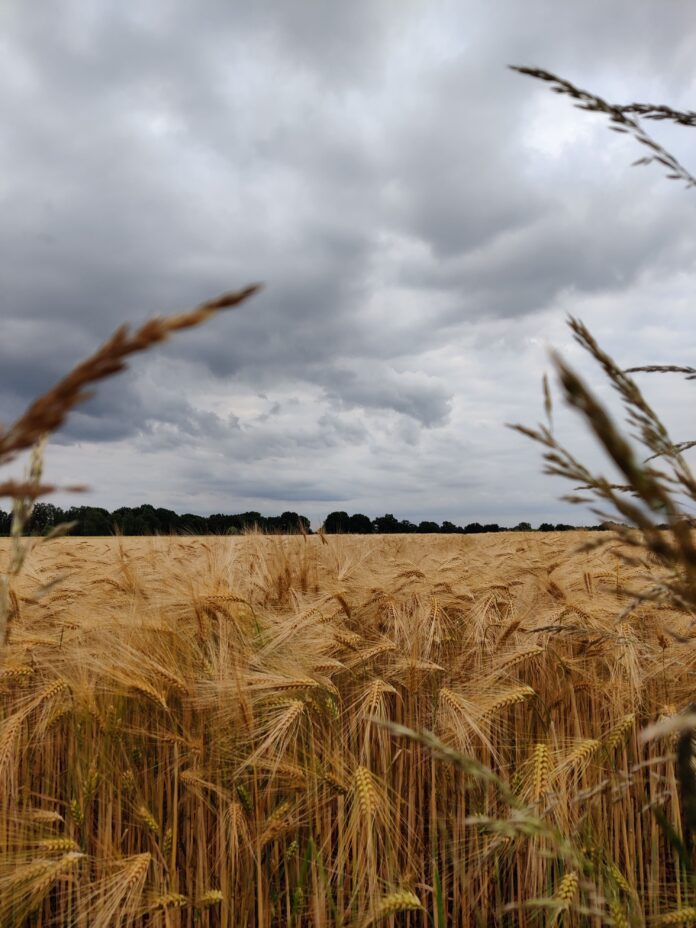The UN predicts that 9 to 10 billion people will be living on the planet by 2050. Therefore, the food demand will spike greatly. At the same time, there is climate change happening right now, and agriculture is very dependent on weather. All of this poses a burning question for farmers: how to harvest more from one hectare of land and spend fewer resources, both human and material? To improve decision-making, increase yields and reduce costs, farmers need digitalization tools. Luckily, with the development of technology, the market now offers different solutions for the so-called smart farming — sustainable and precise agricultural practices implementation.
The Current State Of Smart Farming Technologies
In recent decades, agriculture has undergone a series of technological transformations. Thanks to various smart agricultural gadgets, farmers have gained full control over the process of producing crops and raising livestock. These processes are now more predictable, making agribusinesses more efficient. The development of precision farming is driven by the desire to monitor and control what is happening in the environment — in soil, water and living organisms. For instance, precision irrigation technology enables growers to prevent crop stress due to lack or excess of water and preserve this valuable natural resource as much as possible. There are numerous technologies that make smart farming possible. Let’g go though the biggest of them and see how they transform the way people do agriculture.
IOT
The Internet of Things in agriculture implies the use of sensors to collect data in real time. Farmers rely on smart sensors to check soil moisture content, monitor livestock and crop health, and effectively control drones and farm equipment, mostly in remote areas without full access.
Crop Monitoring
One type of IoT in agriculture is devices that are placed directly in fields to collect data related to farming, from temperature and precipitation for precision irrigation systems to leaf water potential and overall plant health. In this way, crop growth and anomalies are monitored. This effectively prevents any diseases that could harm crops.
Probably the most popular smart gadgets in agriculture are weather stations consisting of various smart sensors. Placed around the field, they collect data from the environment. The resulting measurements can be used to compare climatic conditions, help select crops able to withstand those conditions, and take the necessary measures to improve crop yields.
Livestock Monitoring
To monitor livestock, farmers can also use various Internet of Things solutions to get information about the location and health status of their animals. This data can help prevent disease outbreaks (isolating sick animals from healthy ones) and identify and then treat livestock ailments at an early stage. Such a solution would help minimize animal mortality and reduce the labor involved in identifying where livestock are.
A more sophisticated approach to IoT in agriculture is farm performance management systems. They typically include a number of IoT devices and sensors installed around the farm, as well as a powerful monitoring dashboard with analytical capabilities and built-in accounting and reporting functions.
Remote Sensing
For large farms with a land bank of thousands of hectares, satellite monitoring makes it possible to obtain real-time information from the entire area. With the help of satellite monitoring problem areas of the field are determined. In areas with heterogeneous shoots, agrochemical analysis of soils should be carried out in order to determine the causes of underharvesting. Also heterogeneous seedlings indicate the need for differentiated fertilizer application.
Remote sensing results enable entire field observations and make it possible to assess the state of use of territories, identify crop types, determine the dynamics of biomass growth and detect changes in time. Multispectral image processing can indicate nitrogen deficiencies and the need to apply fertilizers and pesticides to specific parts of the field. It will also help to learn about crop maturity and predicted yield, the course and efficiency of irrigation to create precision irrigation maps, and more. Satellite images in natural colors will help to determine the efficiency of the territory use and the percentage of uncultivated lands.
Livestock Monitoring
Satellite technologies allow farmers to monitor livestock movements and be notified of threats, thus preventing the loss of the herd. Satellite monitoring can be used to track strays by receiving notification of their movements. Livestock monitoring devices work very simply. Special collars are equipped with a GPS tracker. The collar allows farmers to track the location of the animals in real time, the tracker communicates with satellites and transmits the data to the owner. Every few minutes, the tracker turns on and determines where the animal is. The information comes to the owner’s mobile device, which greatly simplifies grazing.
Weather Monitoring
Another area in which satellites are used is weather monitoring. Natural disasters such as droughts and floods pose enormous risks to the well-being of agriculture. Climate change is irreversible and agriculture is the most at risk. No one can change the weather, but monitoring and forecasting it can save a lot of money for agribusiness. Wind, temperature, and precipitation also affect the efficiency of, for example, spraying various liquids needed to protect and better grow the crops. Satellite weather monitoring allows growers to know in time about changes in wind direction and speed and helps in planning precise irrigation based on weather changes, because wind can spread potentially harmful herbicides throughout an area.
Agricultural Machinery and Robotics
Navigation and autopilots are already established technologies in agriculture. GPS or optical, acoustic or radio trackers are used almost everywhere to automatically locate tractors and combines. Sensors are also used to detect obstacles and hazards. Fuel, machine maintenance, and driver salaries are the largest part of a farm’s expenses. Reducing fuel costs, optimizing maintenance schedules and ensuring that machinery is in good state saves the organization money and enables allocation of additional funds to expand the fleet of tractors or improve the quality of agricultural work.
The data collected from unmanned agricultural machinery, when properly analyzed, is of great value. For example, by comparing yields from different harvesters, the potential for optimizing future seeding or fertilizer spraying can be identified. The data collected can be transferred to other systems, e.g. for remote operation or predictive maintenance.
On livestock farms modern robots already can clean waste in stalls, monitor animal health, perform automated milking automation and feeding. Robotic systems focus on the health of the individual animal, which helps increase feed conversion per kg of meat as well as consumer food safety.
Help keep news FREE for our readers
Supporting your local community newspaper/online news outlet is crucial now more than ever. If you believe in independent journalism, then consider making a valuable contribution by making a one-time or monthly donation. We operate in rural areas where providing unbiased news can be challenging. Read More About Supporting The West Wales Chronicle























